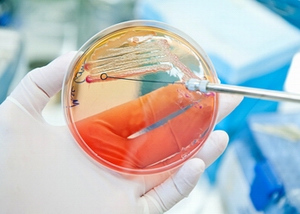Lyons, Colo., a fo othill town North of Boulder that has been devastated by flooding, reported the presence of E. coli in its water system last week.
othill town North of Boulder that has been devastated by flooding, reported the presence of E. coli in its water system last week.
“We don’t want you using any of the water so it was turned off,” said town administrator Victoria Simonsen during a public information meeting on Sept. 19. “It is critical we get that back up, and get it disinfected before we would want any of you to be back.”
Although an evacuation of the town is not mandatory, officials have warned residents that anyone wishing to return would also be without gas, electric, sewerage and communication, adding that it would take two to six months to make the town livable again.
Meanwhile, TV station 9News submitted samples of area floodwaters to the state’s laboratory services and found E. coli levels about 60 times higher than what’s allowed in a public swimming pool.
The director of Colorado’s Water Quality Control Division, Steve Gunderson told the station, “It fit our expectations and reinforces why people should stay out of the water.” He added that the “elevated levels” could be caused by the spreading of livestock waste and raw sewage from damaged facilities.
Gunderson also told the Associated Press that there have been no reports of illness from the dirty water.
Most kinds of E. coli are harmless, but Shiga toxin–producing strains can cause serious illness. So far, reports from Colorado have not indicated specific strains.
To date, the floods have killed eight people and caused damage across 17 counties and nearly 2,000 square miles.
 othill town North of Boulder that has been devastated by flooding, reported the presence of E. coli in its water system last week.
othill town North of Boulder that has been devastated by flooding, reported the presence of E. coli in its water system last week.“We don’t want you using any of the water so it was turned off,” said town administrator Victoria Simonsen during a public information meeting on Sept. 19. “It is critical we get that back up, and get it disinfected before we would want any of you to be back.”
Although an evacuation of the town is not mandatory, officials have warned residents that anyone wishing to return would also be without gas, electric, sewerage and communication, adding that it would take two to six months to make the town livable again.
Meanwhile, TV station 9News submitted samples of area floodwaters to the state’s laboratory services and found E. coli levels about 60 times higher than what’s allowed in a public swimming pool.
The director of Colorado’s Water Quality Control Division, Steve Gunderson told the station, “It fit our expectations and reinforces why people should stay out of the water.” He added that the “elevated levels” could be caused by the spreading of livestock waste and raw sewage from damaged facilities.
Gunderson also told the Associated Press that there have been no reports of illness from the dirty water.
Most kinds of E. coli are harmless, but Shiga toxin–producing strains can cause serious illness. So far, reports from Colorado have not indicated specific strains.
To date, the floods have killed eight people and caused damage across 17 counties and nearly 2,000 square miles.







